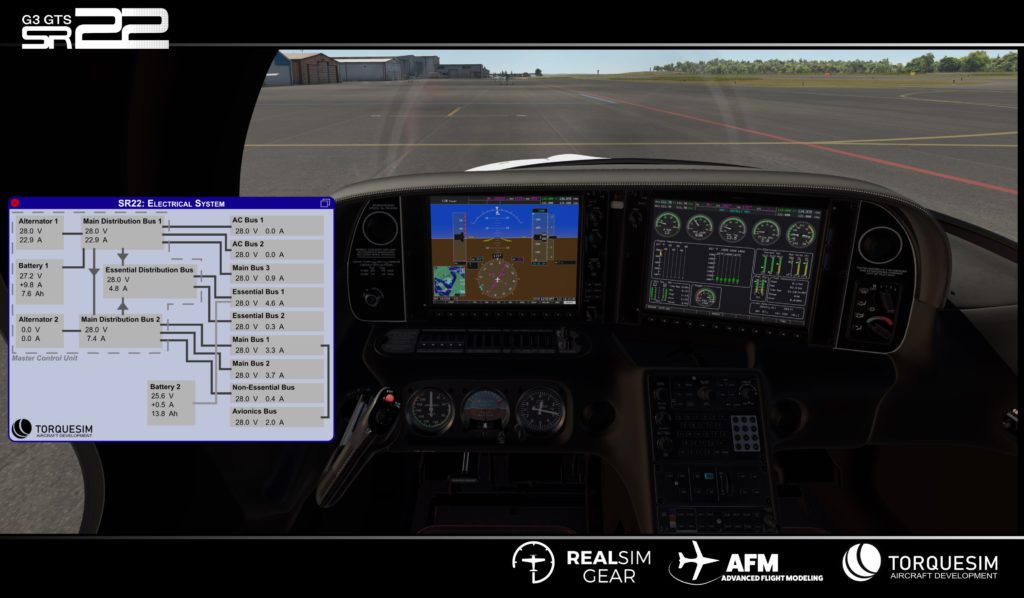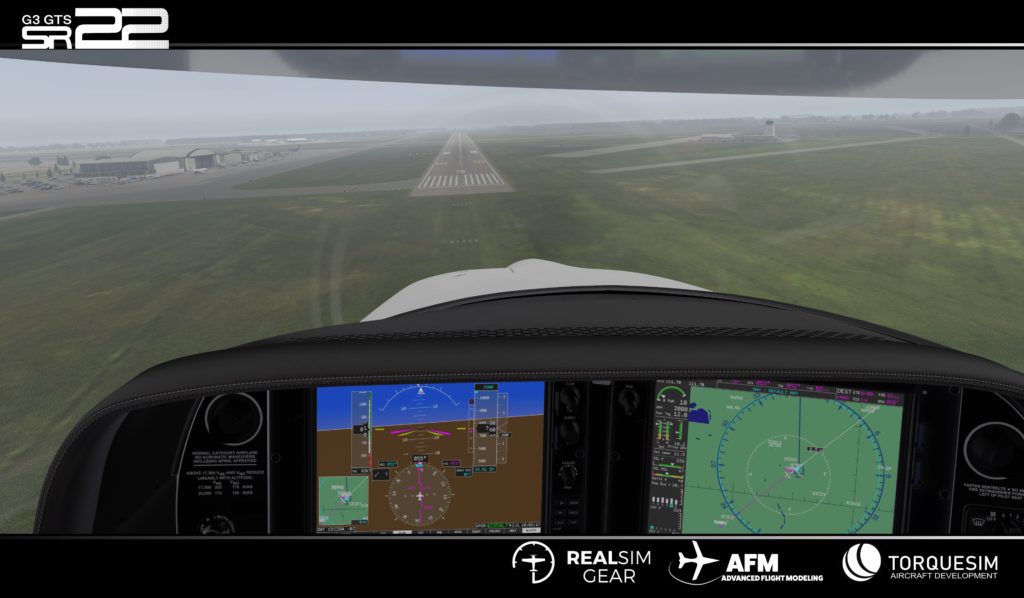We are excited to share what we have been working on behind the scenes for the last month and a half! We last shared about how we are integrating the many unique aerodynamic features of the SR22 into the model, this has been further refined along with our custom engine model (which was discussed here). While refining our custom systems has been a top priority for the development team, our 3D artist Steaven has also been hard at work, making one of the best 3D models for an X-Plane aircraft to-date!

RealSimGear Integration
Our rendition of the SR22 aircraft has designed from the onset with the hardware customer in-mind. Our aircraft will integrate perfectly with the RealSimGear Perspective Hardware, providing the ideal home flight simulator.
The RealSimGear Cirrus Perspective hardware package will work out of the box with the new aircraft providing a fully integrated and easy to configure home training solution for people wanting to learn and practice flying real Cirrus aircraft. The PFD and MFD screens will automatically display the screen contents when the aircraft is loaded, all buttons and knobs will be pre-configured. This makes it possible to practice the exact same workflows and procedures you would normally encounter during a real world flight, including full checklist operation, flight plan loading and instrument approaches. This coupled with the extremely realistic engine and system modeling means that flying with the simulated aircraft combined with realistic hardware provides an incredibly effective home training platform.
Learn more about the RealSimGear G1000 + Cirrus Perspective Package here.

3D Modeling and Texturing Update
We have also nearly completed the 3D model and texturing process for the aircraft! The model has full 4K PBR texturing, with accurately replicated materials throughout (Even down to the style of fabrics and leathers used)!


Engine Model Update
The SR22 IO-550-N engine will be the most accurately replicated piston engine for X-Plane. The engine is simulated down to each individual component! Over the past few weeks, the engine model has been further refined and extensively enhanced in order to represent the proper behaviors of the IO-550-N as authentically as possible during normal, hot, cold, flooded and false starts. This is now supplemented by an extensive oil system and other features never seen before on piston engines in X-Plane, such as engine knock (detonation) based on real data as well as some unique characteristics pointed out by real Cirrus pilots on our testing team. The entire component-based simulation of engine, fuel, TKS and oxygen systems has also been integrated into a novel maintenance concept which organizes maintenance intuitively in the form of inspections.
Our custom FMOD sound pack also benefits from the advanced physics-based system simulation. For example, when flooding the engine you will hear fuel dripping from the cylinder drain port. On the SR22TN you will hear the sounds of the turbochargers depending on their speeds.

Electrical System Update
We originally discussed the Electrical System back in February, detailing the level of depth of the system. We have further refined, tested, and validated the system in all of its various modes! We have developed an internal physics model simulating the lead-acid battery and its various behaviors. The behaviors of the Alternators and the Master Control Unit are also all simulated. The electrical system is a low-level physics simulation, when a switch is flipped on the plane, instead of simply checking for power on the bus, the SR22 simulation actually connects the “switch” tying the individual electrical item onto the power bus. This new logic allows for the many different states of the SR22 to be dynamically simulated at runtime.


New Website!
TorqueSim has a new website! Visit torquesim.com to check it out, our goal was to make everything easier to find and for the website to load quickly across the globe. We have split off the development blog from the main website, you can now find our development blog at blog.torquesim.com with our update blog posts and more.
















